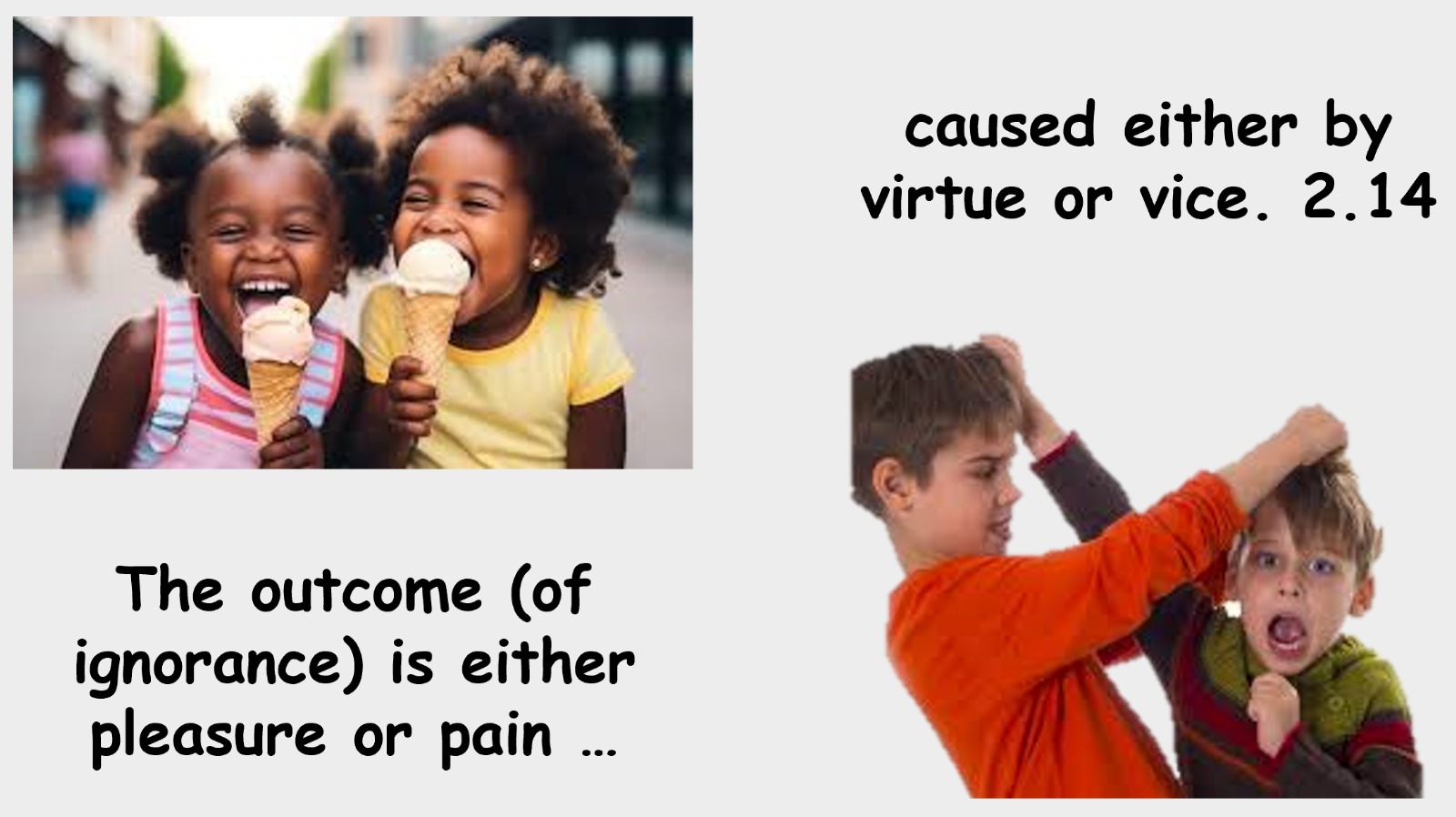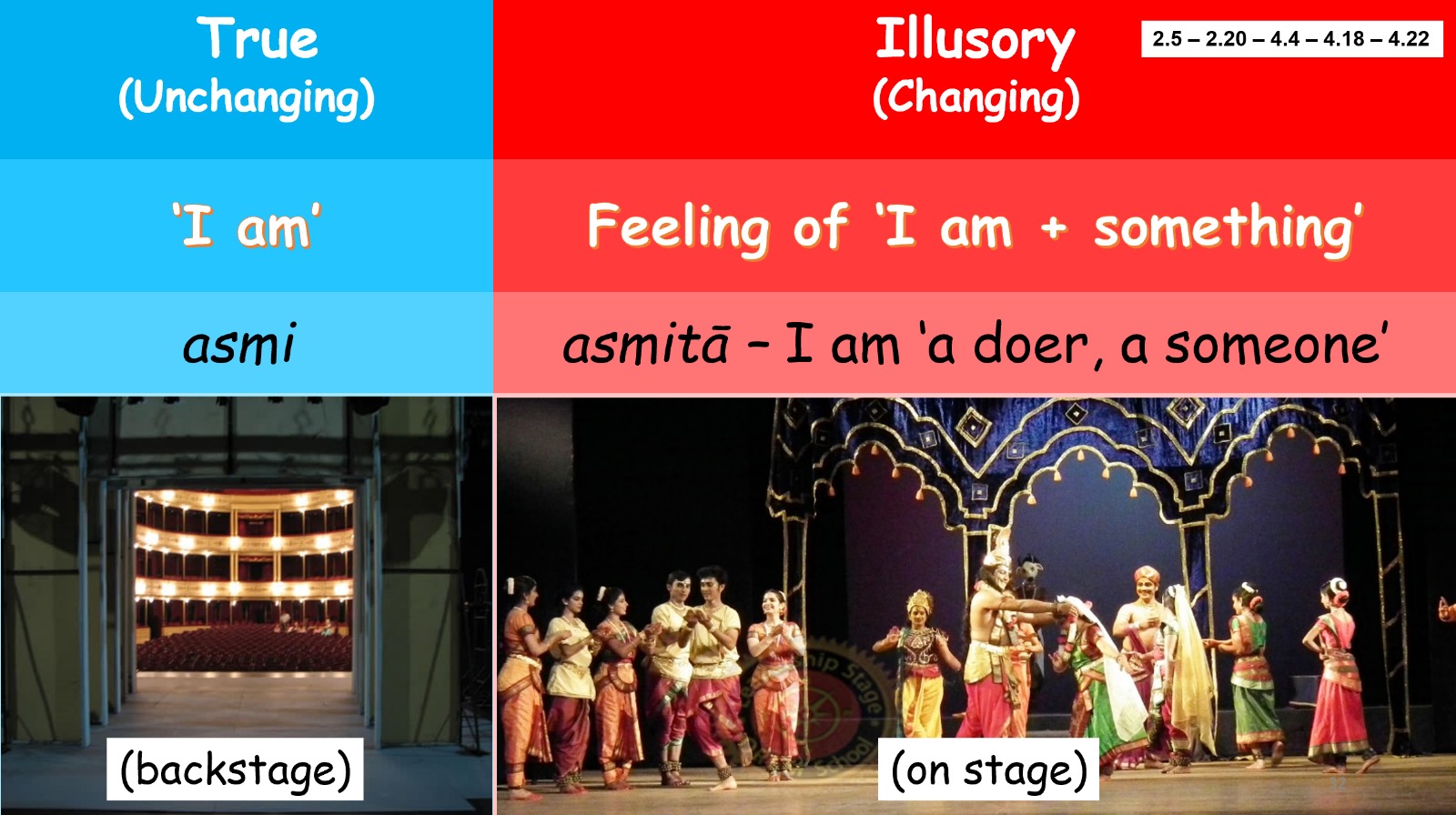KNOWLEDGE
 Movements in the mind: five types of knowledge.
Movements in the mind: five types of knowledge.
Right knowledge
observing a scene

direct cognition
inferring fire from smoke

inference
wisdom

testimony from authority
Wrong knowledge
seeing a mirage

belief in an illusion
No knowledge
deep sleep

nothingness
Imaginary knowledge
imagination

conjured up by words
Past knowledge
memory

retained mental impressions
IMPEDIMENTS

Disease

apathy

carelessness

laziness

addiction

doubt

delusion
lack of focus and instability; all these mental disturbances are the impediments. 1.30

Pain

despair

nervous twitches

irregular breathing
Co-exist with these. 1.31
We suffer because of

Ignorance

Feeling of ego

Liking

Disliking

Fear of death
Real happiness is not skin-deep. From the outside we cannot know if someone is suffering inside. Ignorance of one’s true identity leads to ‘I am + something’ – individuality. This leads to attraction and repulsion and fear of death. Ignorance here means to mistake the non-eternal for the eternal, impure for pure, evil for good and things for self.
As long as ignorance exists, its result will be repeated births, lives and chasing after enjoyment. 2.13


